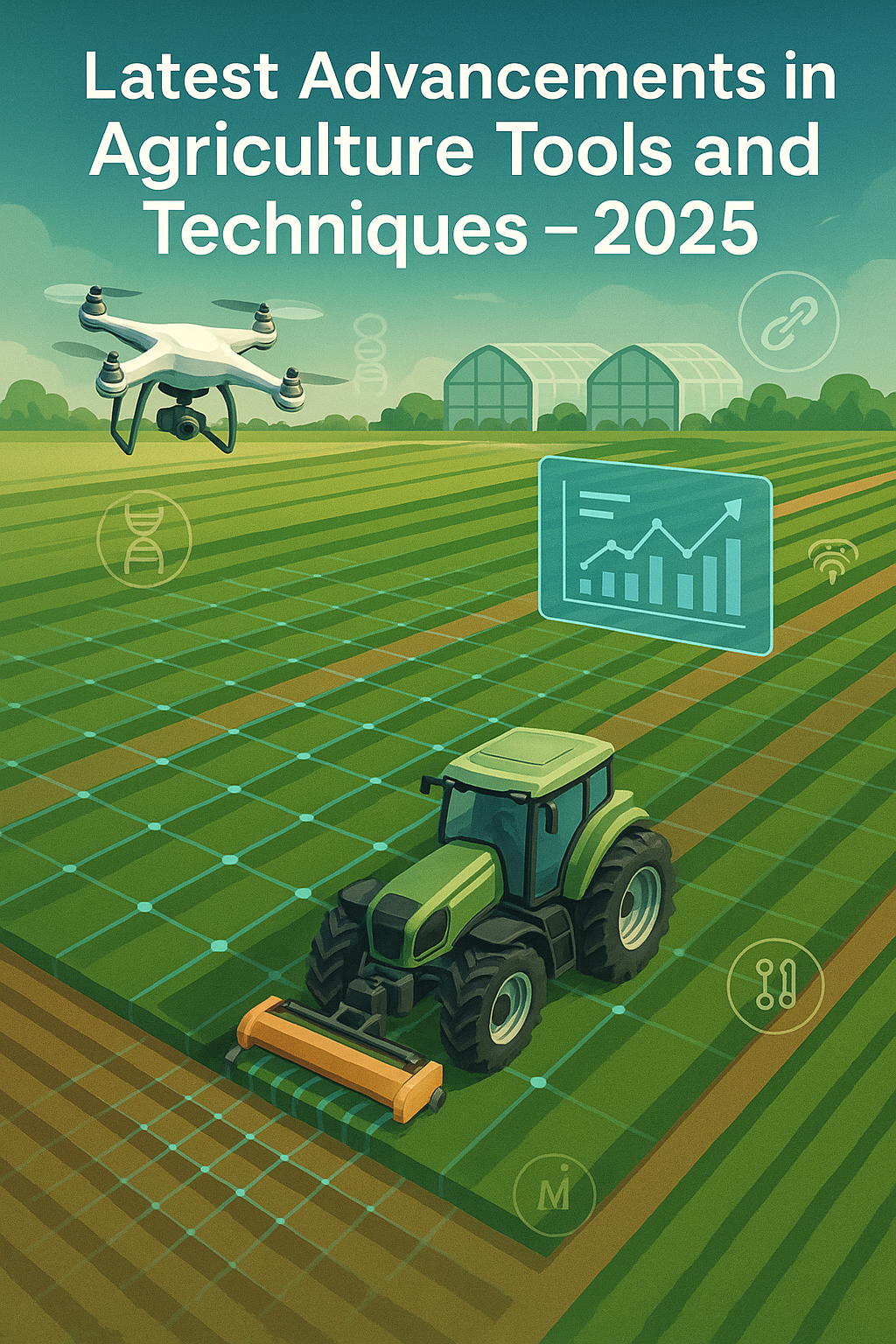
All content is Copyrighted to Infinity Edit. Piracy is strictly prohibited 🚫


Satakshi Chauhan¹ and Purav Yadav²
¹Department of Agricultural Sciences
²Department of Smart Technology and Innovation
The agricultural sector in 2025 is experiencing a profound transformation, driven by cutting-edge technology and innovative practices. These advancements are not only increasing productivity and efficiency but also promoting sustainability and resilience in the face of climate change and resource constraints.
1.
AI-Powered Farm Management Systems: Modern systems use artificial intelligence to analyze vast datasets, including weather, soil health, and crop yield predictions. These platforms recommend optimal planting times, crop choices, and resource allocation, maximizing productivity and profitability.
: Farms are becoming interconnected hubs, with IoT devices such as soil sensors, weather stations, and drones providing real-time data for informed decision-making. This enables precise irrigation, fertilization, and pest management, reducing waste and environmental impact.
Variable-Rate Technology (VRT): VRT allows for the customized application of inputs like fertilizers and pesticides, tailored to specific field conditions, resulting in higher yields and reduced input costs.
2.
: These tractors utilize machine learning and computer vision to navigate fields, avoid obstacles, and perform tasks such as plowing, seeding, and harvesting autonomously. They significantly reduce labor requirements and increase operational safety.
: Equipped with advanced sensors and AI, robotic harvesters can pick crops with precision, minimizing damage and ensuring optimal harvest timing. This is particularly valuable for delicate produce.
Electric and Eco-Friendly Equipment: The adoption of electric and autonomous machinery is accelerating, with innovations like fully electric multi-purpose vehicles and autonomous electric tractors designed for specialized tasks, reducing emissions and operational costs.
3.
: Drones equipped with multispectral cameras and sensors provide farmers with real-time aerial imagery, enabling early detection of crop stress, pest infestations, and nutrient deficiencies. This supports targeted interventions and boosts yields.
: Autonomous drones are now used for crop spraying, delivering pesticides and fertilizers with high accuracy, reducing chemical use and protecting the environment.
4.
: Advanced gene-editing techniques are enabling the development of crops with enhanced nutritional content, resilience to environmental stress, and resistance to pests and diseases. This reduces the need for chemical inputs and supports food security.
Biopesticides and Biofertilizers: The use of biological products is on the rise, offering environmentally friendly alternatives to traditional chemicals and improving soil health.
5.
Vertical Farming and Hydroponics: These methods allow crops to be grown in controlled environments, optimizing light, temperature, and nutrients. They offer solutions for urban agriculture and regions with limited arable land, while conserving water and reducing pesticide use.
: IoT-enabled greenhouses monitor and adjust environmental conditions automatically, ensuring optimal crop growth and resource efficiency.
6.
: Advanced analytics and machine learning extract actionable insights from farm data, supporting decisions on everything from irrigation scheduling to market timing.
: Blockchain technology is being adopted to enhance transparency and traceability in the food supply chain, ensuring food safety and ethical sourcing.
7.
: Techniques such as cover cropping, reduced tillage, and organic amendments are being combined with digital monitoring to maintain and improve soil fertility.
: Smart irrigation systems and moisture sensors optimize water use, critical in regions facing water scarcity.
: Solar-powered pumps and machinery are reducing agriculture’s carbon footprint and operating costs.
8.
Conclusion
The latest advancements in agricultural tools and techniques are ushering in a new era of data-driven, sustainable, and highly efficient farming. From AI-powered management systems and autonomous machinery to biotechnology and smart greenhouses, these innovations are empowering farmers to meet the challenges of the 21st century while safeguarding the environment and ensuring food security for a growing global population.
